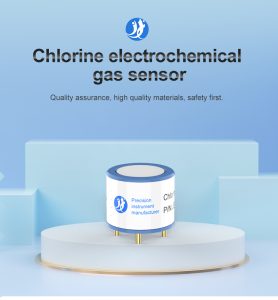Industrial emissions pose significant environmental and health risks. As industries continue to grow and evolve, there is a pressing need to monitor and control the release of harmful gases and pollutants. Gas sensors play a crucial role in this endeavor, enabling real-time monitoring, early detection, and effective control of industrial emissions. In this article, we will explore the importance of gas sensors in monitoring and controlling industrial emissions, their applications, and the benefits they offer in creating a more sustainable future.
Understanding Gas Sensors:
Gas sensors are devices designed to detect and measure the concentration of specific gases in the surrounding environment. They utilize various technologies such as electrochemical, semiconductor, optical, and thermal conductivity to detect target gases accurately. Gas sensors are capable of detecting a wide range of pollutants, including carbon monoxide (CO), nitrogen oxides (NOx), sulfur dioxide (SO2), volatile organic compounds (VOCs), and many others.
Importance of Gas Sensors in Industrial Emissions Monitoring:
2.1 Environmental Compliance: Monitoring industrial emissions is essential to ensure compliance with environmental regulations and standards. Gas sensors provide real-time data on pollutant levels, allowing industries to track their emissions accurately. This information enables them to take necessary measures to minimize their environmental impact and avoid potential penalties for non-compliance.
2.2 Early Detection of Leakages: Gas sensors are instrumental in detecting leakages from industrial equipment and processes. For example, if a gas pipeline or storage tank develops a leak, gas sensors can detect the presence of escaping gases, such as methane (CH4). Early detection allows for prompt action, preventing further leakage, minimizing environmental contamination, and ensuring worker safety.
2.3 Health and Safety: Industrial emissions can pose severe health risks to workers and nearby communities. Harmful gases, such as carbon monoxide, sulfur dioxide, and nitrogen oxides, can cause respiratory issues, cardiovascular problems, and other health complications. Gas sensors provide early warnings by detecting these gases at low concentrations, enabling prompt evacuation, the activation of safety measures, and the prevention of potential human casualties.
Applications of Gas Sensors in Industrial Emissions Monitoring: 3.1 Stack Emissions Monitoring: Gas sensors are commonly used to monitor emissions from industrial stacks or chimneys. By continuously measuring the concentration of pollutants, such as sulfur dioxide and nitrogen oxides, gas sensors help industries assess their emission levels and ensure compliance with air quality regulations. This data enables industries to optimize their processes, implement pollution control measures, and reduce their environmental footprint.
3.2 Leak Detection: Gas sensors are employed in various industrial settings to detect gas leakages from equipment, pipelines, and storage tanks. For instance, in oil refineries, gas sensors monitor hydrocarbon leaks, minimizing the risk of explosions and protecting workers' safety. Gas sensors also play a crucial role in sectors like chemical manufacturing, where the release of toxic gases can have severe consequences on human health and the environment.
3.3 Indoor Air Quality Monitoring: Industries often have indoor spaces where workers spend significant amounts of time. Monitoring indoor air quality is vital to ensure a healthy and productive work environment. Gas sensors can detect volatile organic compounds (VOCs) and other pollutants, allowing industries to implement appropriate ventilation systems and control measures. This safeguards worker health and improves overall productivity.
Benefits of Gas Sensor Technology in Industrial Emissions Control: 4.1 Real-time Monitoring: Gas sensors provide real-time data on pollutant levels, enabling industries to monitor emissions continuously. This allows for quick response times and immediate action when levels exceed acceptable limits.
4.2 Early Warning Systems: Gas sensors offer early detection capabilities by identifying harmful gases at low concentrations. This early warning system helps prevent accidents, minimize health hazards, and limit damage to the environment.
4.3 Data-Driven Decision Making: Gas sensors generate accurate and reliable data, which businesses can analyze to optimize their processes, identify emission sources, and develop effective pollution control strategies. This data-driven approach ensures efficient resource utilization, reduces emissions, and improves overall operational efficiency.
4.4 Environmental Sustainability: By monitoring and controlling industrial emissions effectively, gas sensors contribute to sustainability efforts. They help industries reduce their carbon footprint, conserve resources, and minimize their impact on the environment and climate change.
Challe
 : +86 155 8830 2704
: +86 155 8830 2704 : jxdziot@gmail.com
: jxdziot@gmail.com
